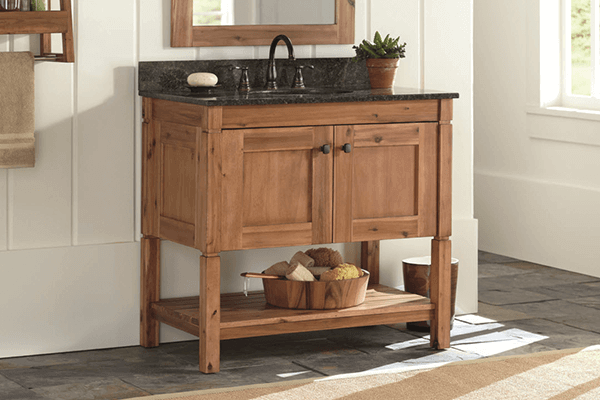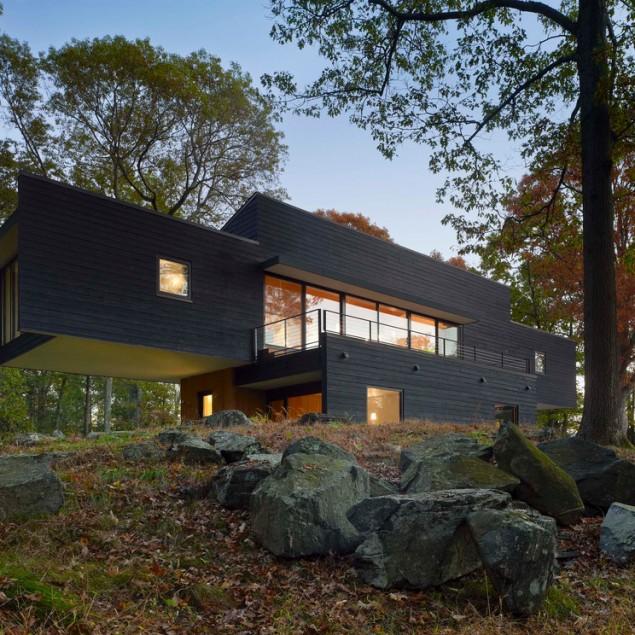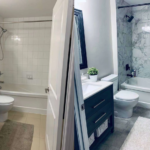There are no hard rules for choosing bathroom vanities. It is typically the size of the bathroom and design preferences that determine the vanity used in the space. Below are some details on sinks and paint options to help you in choosing your bathroom vanity:
Sinks
There seems to be endless choices for bathroom vanities cabinets and sinks. Some are self-contained, while others are mounted or must be installed on or into a countertop.
Wall-mounted Sink
This type of sink is among the most common and basic bathroom sinks, particularly in older homes. This type of sink is typically used when available budget or space is tight. As suggested by the name, these sinks are directly mounted to the wall, without any floor support. Special hanger brackets are used to fasten the sink to the wall.
The Framed Sink
This is designed to be installed in a vanity countertop. It is commonly found in older homes, apartments and budget-friendly newer homes. It is typically installed into plastic laminate countertops. As suggested by the name, the framed sink drops into a countertop and a metal “frame” is used to trim it out.
The Under-mount sink
This is a clean-looking, premium sink mostly found in remodels and newer construction. This type of sink cannot be installed in tile countertops or plastic laminate. They are designed to be installed into synthetic composite tops or solid-surface countertops such as stone.
The Vessel Sink
This is a unique vanity that sits on a countertop typically secured to the wall and a floor-mounted base for stability. This sink requires a waste-drain system and non-standard faucet and is mainly used in major bathroom renovations or new construction. The faucets for vessel sinks are either wall mounted or deck mounted on a pedestal. As suggested by name, this is a vessel into which water is poured through a faucet.
Paint Finishes
Bathrooms are typically used more heavily than the average room in the home and are subjected to a lot of moisture. Therefore, the paint used on the walls and vanities should be mildew-resistant and easily washable. Semi-gloss paints fit the bill; in fact, semi-gloss is the best paint for bathroom vanities.
Acrylic and oil-based paints are both available in a semi-gloss option. Fast-drying, water-based acrylic paints are ideal for bathroom vanities. For best results, lightly sand any existing paint and use a coat of primer before applying the paint. This will allow the semi-gloss paint to adhere better. If available, you should buy paint that has an added mildewcide.
Although white paint is commonly used for bathroom vanities, you can use a preferred color on your vanity to match or complement your color scheme. This is especially true for more modern spaces.
DIY on a Budget
If you’re interested in undertaking DIY projects but you’re on a budget, below are some essential DIY power tools and hand tools you should consider for your arsenal:
Miter Saw
This is a must-have tool for most seasoned ‘do-it-yourselfers.’ If you are only able to afford a single power tool or you are acquiring them one at a time, consider making a miter saw your first purchase.
The infamous sliding miter saw is a must-have tool for most seasoned ‘do-it-yourselfers.’
Air Compressor and Nail Gun
5-inch Rotary Sander
This tool is another ‘must have’ for ‘do-it-yourselfers.’
These can get you started on a lot of DIY projects.
There are various bathroom vanities that support different types of sinks. These include narrow, inexpensive cabinets designed to house a small sink, double-wide and expansive cabinets designed for a countertop and double sinks. There are also super costly bathroom vanities designed to look like a fine piece of furniture.
You can buy the vanity of your choice or if you have the skill, time and tools, you can undertake a DIY project and make one yourself.








